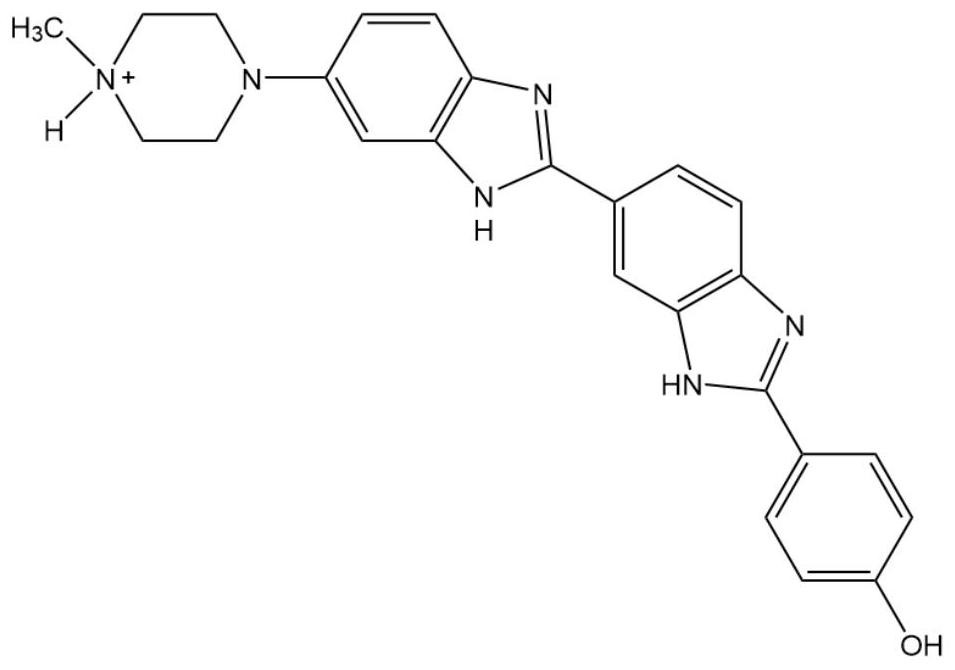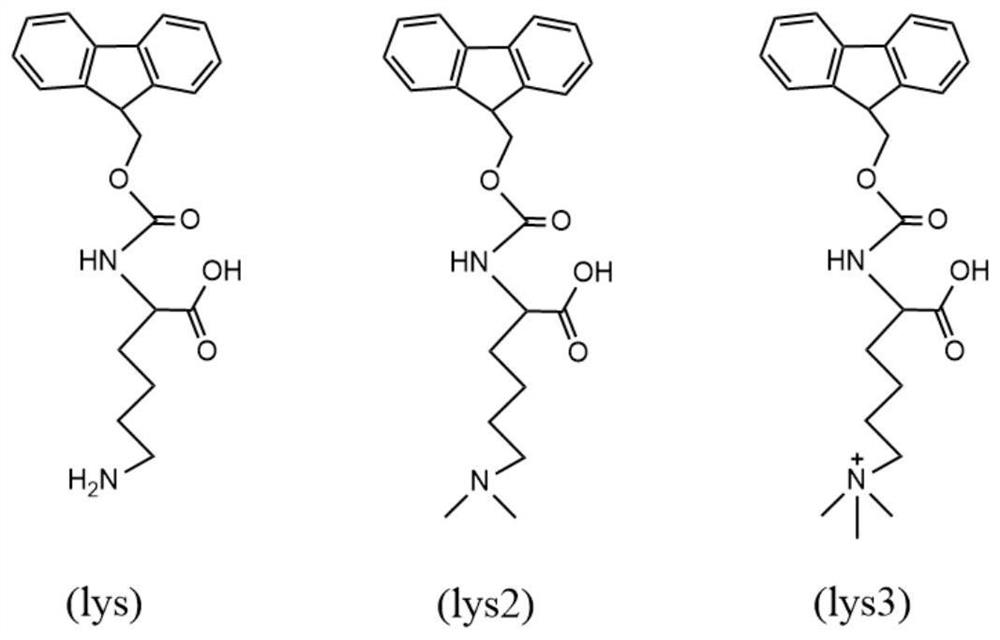A kind of molecular assembly type fluorescent probe and its preparation method and application
A fluorescent probe and molecular technology, applied in the field of biochemistry, can solve the problems of affecting the analysis sensitivity, reducing the hydrogen bond force of amino acid residues, and the difficulty in identifying methylated peptides, achieving fast detection speed and high detection accuracy Effect
- Summary
- Abstract
- Description
- Claims
- Application Information
AI Technical Summary
Problems solved by technology
Method used
Image
Examples
Embodiment 1
[0049] Preparation method of molecular assembly type fluorescent probe
[0050] First, prepare cucurbituril CB[n]:
[0051] Weigh 80.0 g of urea, stir to dissolve it in 250 mL of deionized water, and use concentrated sulfuric acid to adjust the pH of the solution to 1-2. Under stirring, slowly add 62ml of glyoxal (40% aqueous solution) dropwise to the solution with a dropping funnel. The rate of addition is about 3 seconds, and the temperature of the oil bath is controlled to be lower than 70°C. About 6h, the reaction ends. The reaction solution was filtered under reduced pressure, washed with water and acetone three times in turn, and vacuum-dried at 70° C. for 24 hours to obtain 55.8 g of glycoside urea. Weigh out 50.0 g of glycoside urea and dissolve it in 150 mL of concentrated hydrochloric acid. Stir at room temperature, place it in an ultrasonic disperser, take it out after 10 minutes to ensure that the glycoside urea is completely dissolved, then add 23.0 g of parafo...
Embodiment 2
[0053] The application of the molecular assembly-type fluorescent probe in identifying trimethyl-substituted Fmoc-protected lysine, the specific operation steps are as follows:
[0054] 1) First configure 3 parts of fluorescent probe aqueous solution with a concentration of 3.0 μM, measure the fluorescence spectrum of its emission under the condition of excitation wavelength of 361 nm, and record the maximum emission fluorescence intensity I of each part at 400-650 nm 0A , I 0B , I 0C ;
[0055] 2) Add Lys3 dropwise to any one of the solutions and mix evenly, ensure that the molar ratio of the dropwise Lys3 to the fluorescent probe is 0.3, measure the fluorescence spectrum it emits under the condition of excitation wavelength 361nm, and record it at 400 -Maximum emission fluorescence intensity I at 650 nm 1A ;
[0056] 3) Continue to add Lys3 solution dropwise to this solution, and the amount of dropwise addition is the same as step 2), and similarly record its maximum emi...
Embodiment 3-4
[0059] According to Example 2, the guest molecule Lys3 in step 2) was replaced by Lys2 and Lys, respectively, and the fluorescence spectra were measured after adding different molar ratios of Lys2 and Lys to the fluorescent probe with other conditions unchanged. The fluorescence spectrum of Lys is shown in Image 6 shown. The obtained fluorescence response curve is as Figure 7 shown. Obviously, the Lys3 curve has the largest change trend. By calculation, I nA / I 0A =0.44. Thus, trimethyl-substituted Fmoc-protected lysines can be accurately and efficiently identified.
[0060] It is understandable that the guest molecule in Example 2, 3 or 4 was replaced with an unknown type of lysine, and its 1 n / I 0 If the value is less than or equal to 0.55, it can be judged that the solution contains Lys3.
PUM
 Login to View More
Login to View More Abstract
Description
Claims
Application Information
 Login to View More
Login to View More - R&D
- Intellectual Property
- Life Sciences
- Materials
- Tech Scout
- Unparalleled Data Quality
- Higher Quality Content
- 60% Fewer Hallucinations
Browse by: Latest US Patents, China's latest patents, Technical Efficacy Thesaurus, Application Domain, Technology Topic, Popular Technical Reports.
© 2025 PatSnap. All rights reserved.Legal|Privacy policy|Modern Slavery Act Transparency Statement|Sitemap|About US| Contact US: help@patsnap.com



